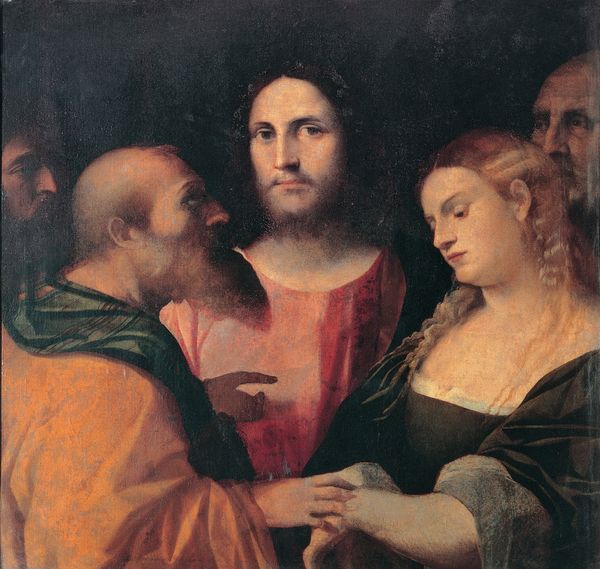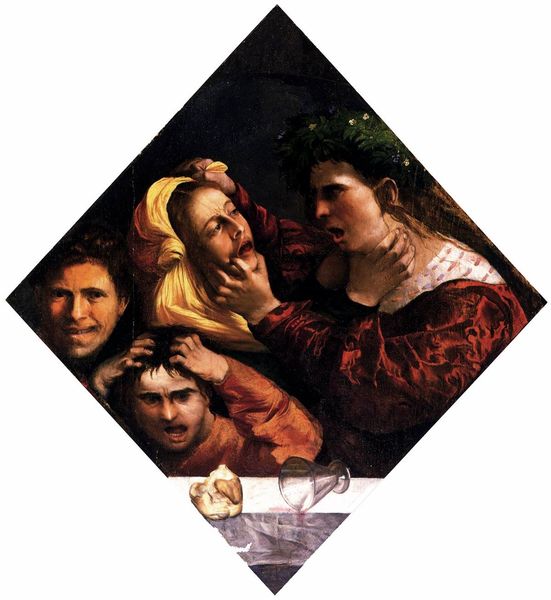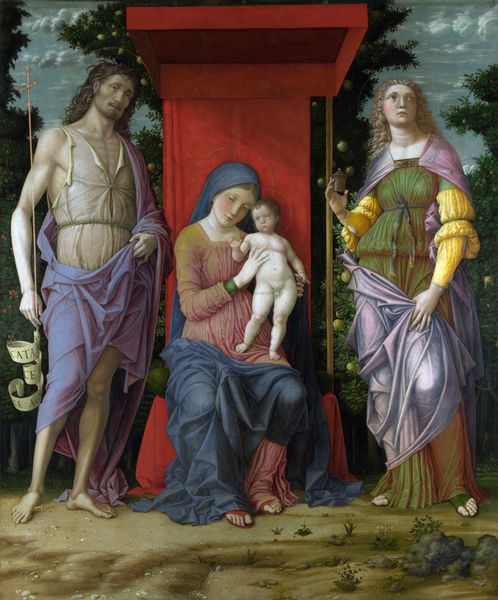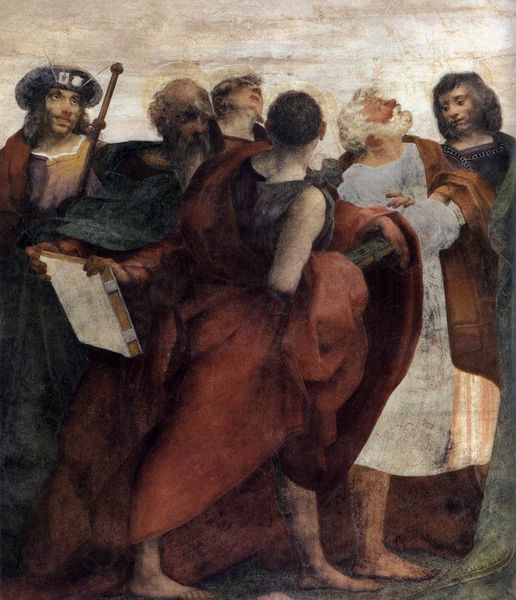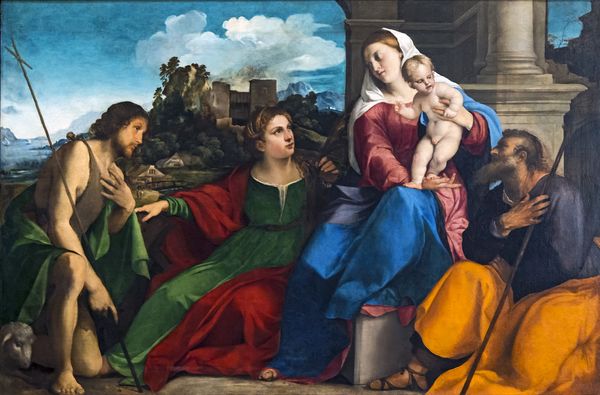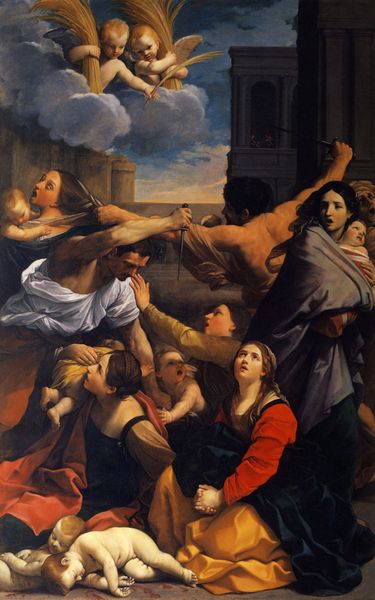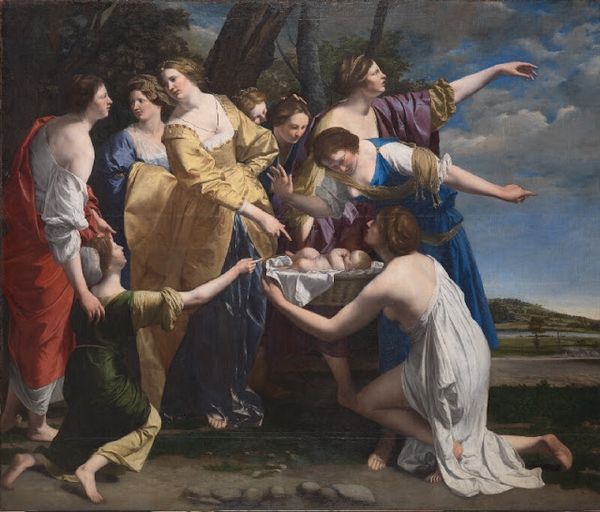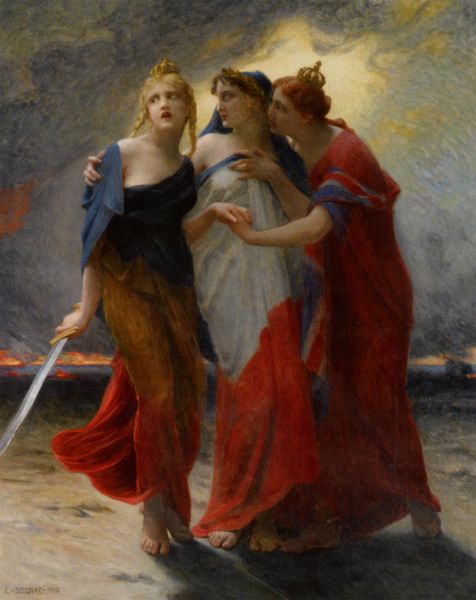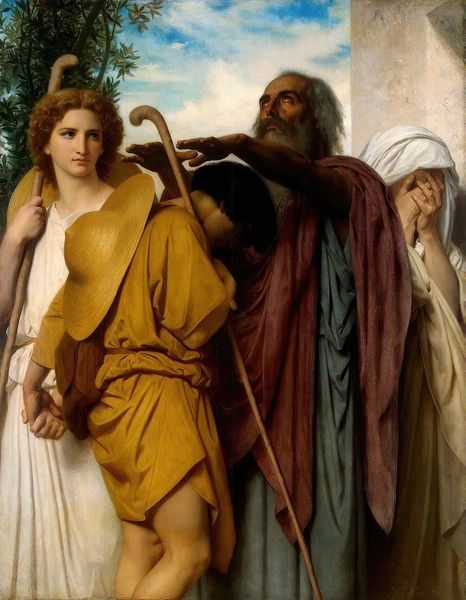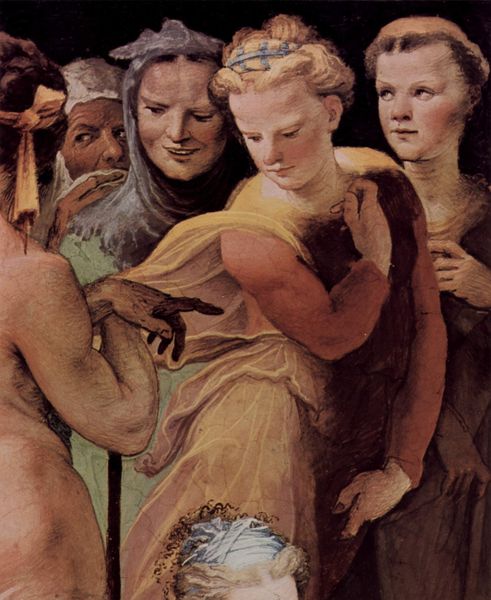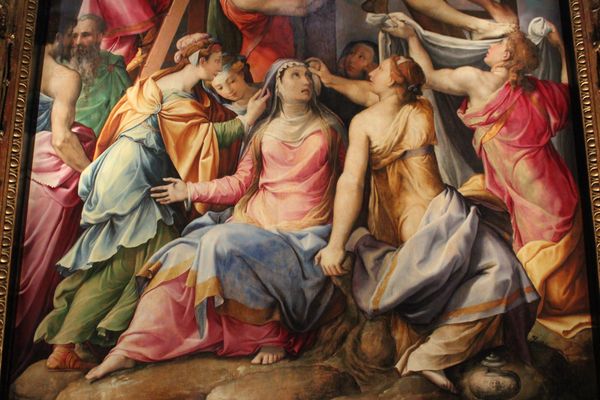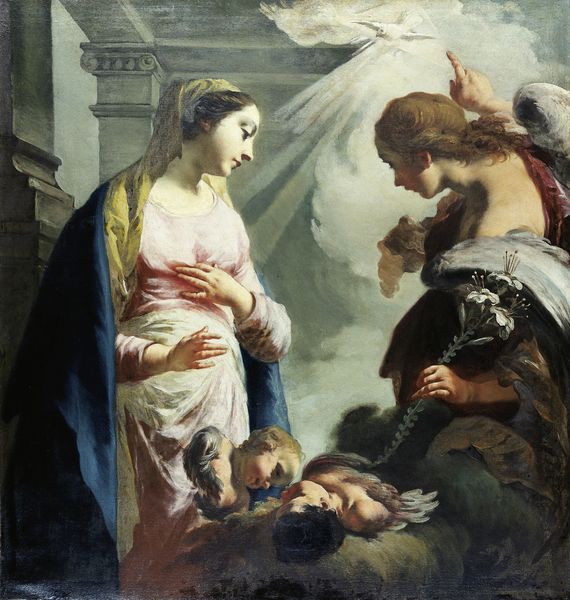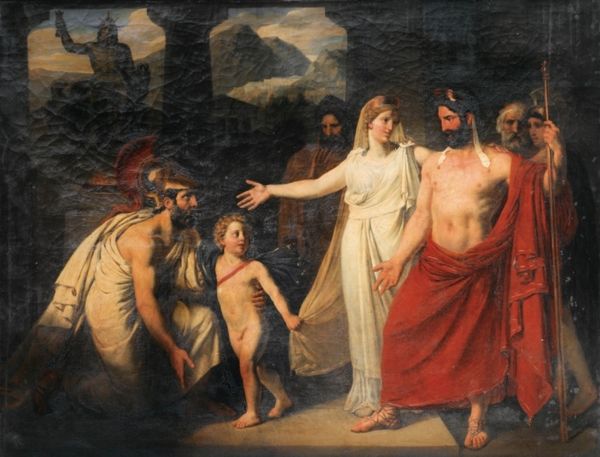
St. Cecilia with Sts. Paul, John Evangelists, Augustine and Mary Magdalene 1516
0:00
0:00
raphael
Pinacoteca Nazionale di Bologna, Bologna, Italy
oil-paint
#
portrait
#
high-renaissance
#
allegory
#
oil-paint
#
figuration
#
oil painting
#
mythology
#
history-painting
#
italian-renaissance
#
portrait art
Dimensions: 238 x 150 cm
Copyright: Public domain
Editor: This is Raphael's "St. Cecilia with Sts. Paul, John the Evangelist, Augustine, and Mary Magdalene," an oil painting from 1516. It feels quite serene, almost reverent. There's this contrast between the divine scene above and the earthly figures below. What stands out to you about it? Curator: The scattered instruments at Cecilia’s feet are interesting to me. It reveals an attitude toward craft as being of lesser importance than sacred arts, such as song. Look closely. What instruments do you see, and what’s the quality of the painting applied to them? Are these broken items? Refuse? Editor: I see what looks like a lute, a tambourine, and other stringed instruments, they all look pretty worn-down. The contrast to the smooth robes worn by the saints is definitely noticeable, what is Raphael suggesting through materiality here? Curator: Exactly. Consider also the availability of materials in Raphael’s time, how these instruments would have been fashioned. Wood, gut, perhaps ivory – all demanding skilled labour, and expensive. The rough presentation and disposal speaks volumes about what's prioritized: heavenly music versus earthly labor, suggesting that craft can fail or be flawed in contrast to perfect divine creation. Editor: So it's almost like he's commenting on the value of different kinds of work, privileging divine inspiration over human skill, despite both relying on the manipulation of physical material. Curator: Precisely. Think about who commissioned such a piece and why. It reinforces a hierarchy not just of materials, but also of the labor associated with them, and how those power structures translate to aesthetic value. Is it also interesting to note the tools may suggest reference to making of paintings also. Editor: I see your point. Seeing it in this light, it really makes you question what we consider "art" and who decides that value. Thank you for the illuminating class, which challenges these traditional perceptions! Curator: Anytime! Thinking about materials helps unlock hidden narratives.
Comments
No comments
Be the first to comment and join the conversation on the ultimate creative platform.

